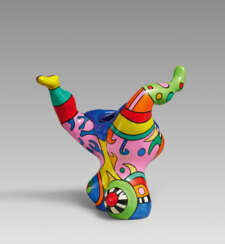Painted — Auction
Lot 633 Niki de Saint Phalle. Upside Down Lady Vase
Niki de Saint Phalle (1930 - 2002)  A541: Evening Sale
A541: Evening Sale 

Niki de Saint Phalle
29.10.1930 - 21.05.2002
France, USA
Niki de Saint Phalle was a French-American sculptor, painter, filmmaker, and author of colorful hand-illustrated books. Widely noted as one of the few female monumental sculptors, Saint Phalle was also known for her social commitment and work.

VAN HAM Kunstauktionen GmbH
A541: Evening Sale
Date: 03.12.2025 18:00 UTC +01:00
Number of lots in the catalog: 519

